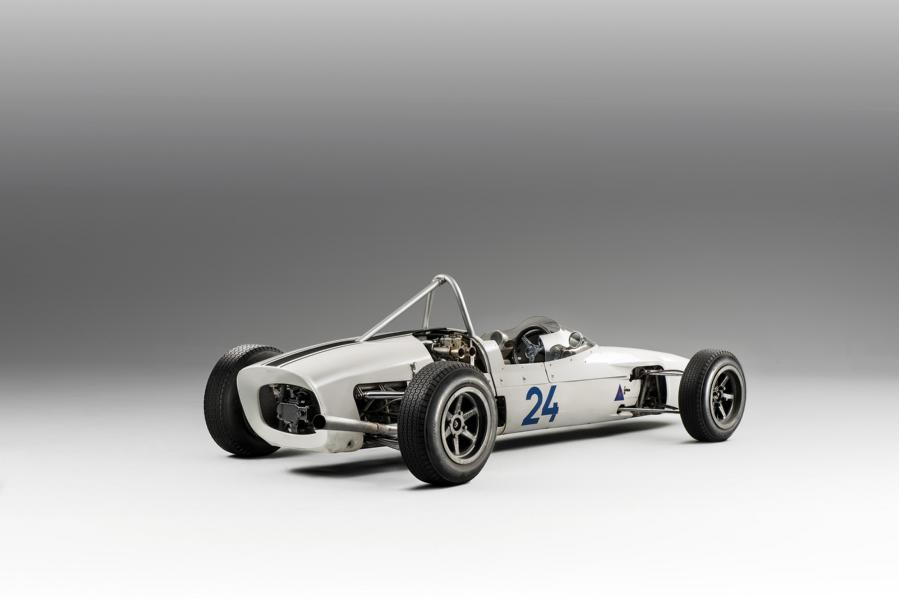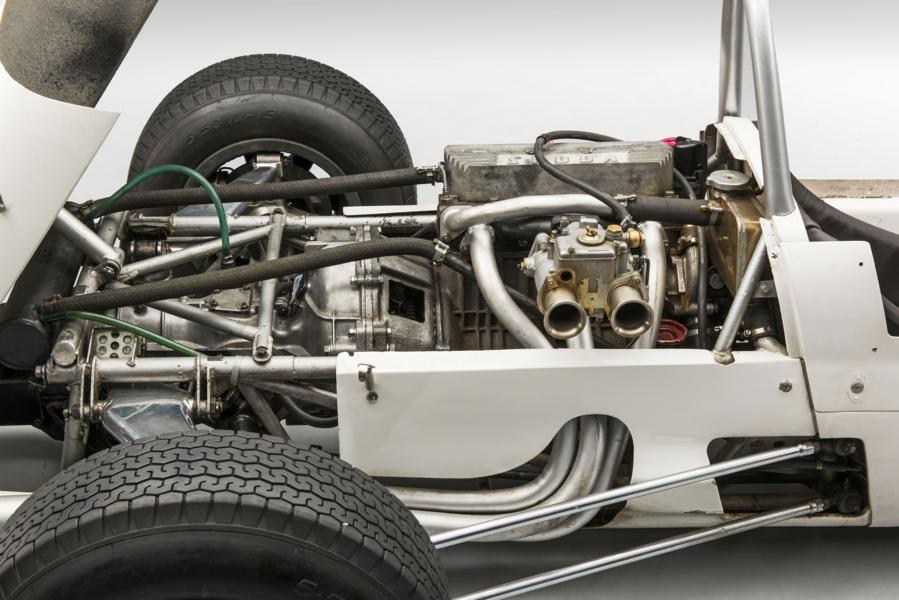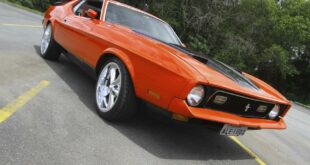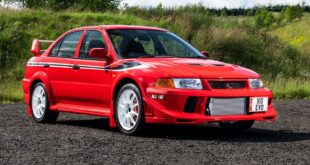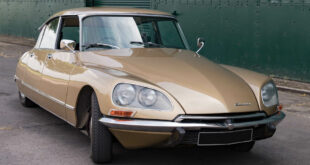When the regulations for the traditional Formula 3 monoposto category changed in 1964, ŠKODA was able to react quickly thanks to the 1000 MB. This model was already in preparation at this point in time. During the 1965 season, three completely new single-seaters started with the experienced drivers Václav Bobek, Jaroslav Bobek and Miroslav Fousek. The newly established formula class offered the brand and its drivers the unique opportunity to measure themselves against the competition from Western Europe.
Škoda F3, type 992 (1964)
In addition to the complete selection of images for this press release on the media portal skoda-media.de, there is also a 32-page brochure in English on various topics from 120 years of ŠKODA Motorsport. The Grand Prix of Czechoslovakia in September 1949 was to be the last international automobile race in the then socialist country for a long time. The big stars of the Grand Prix on the Masaryk-Ring were later involved in the founding of Formula 1. In the last race already, enthusiasm compensated for a lack of financial resources, a lack of material and a lack of political will. Single-seater racing vehicles that met the requirements of international formula races were built under the simplest of conditions.
The first Formula 3 races took place in the late 1940s. On the engine side, affordable single-cylinder motorcycle engines with a displacement of 500 ccm were used, which subsequently prevailed. In 1951 the series was renamed 'International F3'. But as early as the late 1950s, the more modern Formula Junior made its debut in Italy with standard four-cylinder engines with a displacement of less than 1.100 cc. From this, on January 1, 1964, the classic Formula 3 developed with vehicles up to 1.000 cc.
technical affinity with the type Š 990
The ŠKODA monoposto project was given the name Š 992 in Mladá Boleslav - a reference to its technical relationship with the Š 990, which, as the newly designed ŠKODA 1000 MB, was ready for series production in the spring of 1964. The first Š 992 single-seater was completed in February 1964. It had a tubular steel lattice frame and independent suspension, on trapezoidal semi-axles at the front and five-link suspension at the rear. A progressive solution - also in international comparison - was the installation of spiral springs and shock absorbers on both axles inside the body, which had a positive effect on the aerodynamics of the monoposto.
The adjustable shock absorbers made it possible to vary the ground clearance of the car. His 13-inch alloy wheels with Dunlop tires were braked by four disc brakes from the British manufacturer Girling. A ŠKODA inline four-cylinder engine with OHV valve control and triple-bearing crankshaft was installed lengthways in front of the rear axle. This drive was produced in numerous modifications until 2003 and was last used in the first generation of the ŠKODA FABIA. In the F3 Monoposto, the engine had a shorter stroke and a larger bore and a displacement of 999 ccm. Starting from the vertical axis of the vehicle, it was inclined 12 degrees to the left and the coupling was flanged to the rear end.
The so-called 'intermediate transmission' was located between the clutch and the gearbox. It made it possible to lower the center of gravity of the engine and thus adapt the overall ratio to the character of the respective racetrack. The differential gear had a gear ratio of 4,44 and came from series production. The water and oil coolers were in the front of the vehicle in front of the driver's feet. Next to him were the fuel tanks with a total volume of 30 liters on both sides. The sleek body was made up of several parts and was removable. It was developed in the wind tunnel and in its first version was initially made of aluminum, but a little later it was made of fiberglass-reinforced plastic. The space in the cockpit was tight - so the small steering wheel was only 300 millimeters in diameter. The unladen weight of the ŠKODA F3 was just under 420 kilograms, with 41,5 percent on the front axle and 58,5 percent on the rear including the engine.
53 kW (72 PS) at 7.250 1 / min
The one-liter engine originally developed 53 kW (72 hp) at 7.250 rpm. However, by gradually increasing compression and further optimizations, it achieved an output of 1 kW (1966 hp) at 66 revolutions per minute in the 90 season, while at the same time the overall weight was reduced by 8.000 kilograms. While the ŠKODA F15 reached a top speed of 3 km / h during test drives at the airfield in Hoškovice at the end of 1964, it cracked the 188 km / h mark two years later.
Right from the start, the ŠKODA F3 was in the top group in all races. At that time, the races were still held on demanding circuits that were not artificially created or that led over inner-city courses with cobblestones and lower-lying manhole covers. The traditional 'Mezi pavilony' race in the city of Brno was held on an improvised route between the pavilions of the exhibition center. In 1966 Václav (Sen.) and Jaroslav Bobek took first two places with their ŠKODA cars. Jaroslav Bobek became Czechoslovak Formula 3 champion in the same year, two years later his teammate Miroslav Fousek triumphed in the F3 championship of socialist countries.
With these successes, the successful career of the visually and technically successful ŠKODA F3 monopostos slowly came to an end. In international races at the end of the 1960s, they had to contend with competition from Western European countries, such as the Brabham and Tecno brands. In the domestic races, vehicles of the Lotus Cosworth type prevailed, which also drove well-known drivers like Vladimír Hubáček and Vladislav Ondřejík for the Dukla Prague team. Nevertheless: The ŠKODA single-seaters fought successfully in the often unequal battles and rightly play an important role in the history of Czechoslovak motorsport. The final end for the monopostos from Mladá Boleslav came with the change in the Formula 3 regulations in 1971 - an engine with 1,6 liter displacement stipulated. Subsequently, the ŠKODA F3 vehicles only served as a technology supplier for the new ŠKODA brand formula.
The ŠKODA F3 from Václav Bobek Sen. remained in the possession of AZNP and is now part of the collection of the ŠKODA Museum. Miroslav Fousek's car was donated to the National Technical Museum in Prague in 1971, and Jaroslav Bobek's single-seater was converted into a two-seater Spider Baghira by Václav Král in the mid-1970s. The working prototype that started it all was dismantled after the 1965 season and is now in a private collection waiting for its restoration to be completed.
Of course, that wasn't the end of it. Our tuning magazine has tens of thousands of other tuning reports in stock. Do you want to see them all? Just click HERE and look around. Or are you especially interested in our Tuning classics category? Then the following extract of tuned young and old timers is sure to be just the thing to browse.
|
E-Queen: Citroën DS as an electric conversion from Electrogenic! |
ŠKODA F3, Type 992 (1964): Formula racing car in the European class
Photo credit: Škoda
tuningblog.eu - on the subject of cars, motorcycles, bikes / ATV / scooters & Co., and of course our passion, the Tuning, we keep you up to date and report daily on cool vehicles from all over the world. It's best to subscribe to ours Feed and you will be automatically informed as soon as there is a new post.
 tuningblog.eu Your magazine about tuning the car
tuningblog.eu Your magazine about tuning the car

